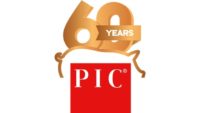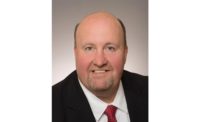Building the perfect beef carcass is not as easy as it sounds. At the American Meat Science Associations’ 71st Annual Reciprocal Meat Conference in Kansas City, Missouri, industry leaders discussed how genetics and consumer trends drive the desire for the best beef. As the population continues to grow, producers and packers must find a way to meet demand, while also remaining profitable on all fronts. With new technology at our fingertips, we have the capability to make beef better and more sustainable for years to come.
For the last decade, quality grade has gone up at a steady rate. We have seen more Prime and Choice carcasses than ever before, but are we still receiving that premium at the producer level? What improvements can we make in our herds, while remaining high quality when harvested?
Within the Angus industry specifically, there is room for growth and improvement, while optimizing technology. Dan Moser, President of Angus Genetics, Inc., explained to attendees how Angus programs such as Angus Source and Angus Link work to help producers get a higher premium for Angus-influenced cattle. These higher premiums are also seen down the rail, especially if carcasses qualify for the Certified Angus Beef brand. Additionally, Moser discussed the importance of utilizing genetic technology, like high-density genomic testing, to evaluate herd sire and maternal performance. By breeding cattle for carcass traits year-after-year, even in crossbreeding, we can hopefully streamline the outcome to be more desirable.
Brett Spader, Executive Director for the National Center of Beef Excellence, reiterated the same need for using genetics, calling it the “number one controllable agent for change” within the beef industry. He explained how breeding decisions at a seedstock level have long-reaching impacts. Not only do these breeding decisions show up on the rail, but also when implemented back into herds. These can be optimized through the increased use of artificial insemination and genomically-enhanced expected progeny differences. Furthermore, Spader described the need for crossbreeding to amplify heterosis, avoid breed-specific downfalls and improve breed compliance. For example, using continental breeds works to improve yield grade, growth and performance. Ultimately, Spader reminded attendees to evaluate their current herd status, where they wanted to go in the future, and encouraged them to be different if we wanted to improve the industry as a whole. Focusing just on quality grade will not give the beef industry a benchmark if we want to improve it from end to end.
Continuing down the same path, Shane Bedwell, Chief Operating Officer and Director of Breed Improvement at the American Hereford Association, explained the importance of heterosis and why it makes sense to implement at the ground level. Unique to the Hereford breed, the Maternal Advantage and Premium Red Baldy programs help commercial producers understand the knowledge and importance behind expected progeny differences, while working to increase their market exposure on every avenue. In a study done by the American Hereford Association, research showed that heterosis provides 7 percent higher pregnancy rates, a $30 advantage in feedlot profitability, a $20 advantage in feed efficiency and overall, $51 more per cow, per year. Nonetheless, Bedwell described how we can maximize profitability by incorporating more than one breed’s genetic profile into the makeup of beef carcasses.
Ultimately, Moser, Spader and Bedwell agree that incorporating genetic technologies and hybrid vigor into producer programs can better the beef industry for years to come. With this in mind, we can see substantial improvements in terms of feed efficiency, sustainability and yield grade qualifications. This means more money for producers, while also meeting consumer demand for better, more affordable beef. To learn more about breed-specific programs or heterosis research, visit angus.org, beefcenter.org, or hereford.org.





